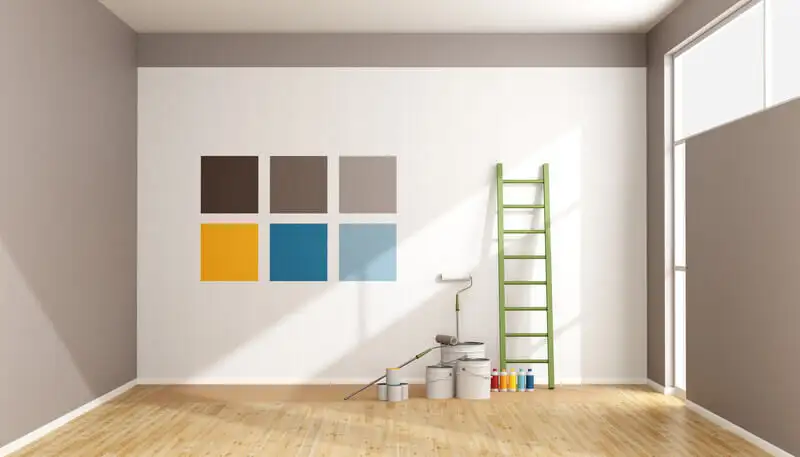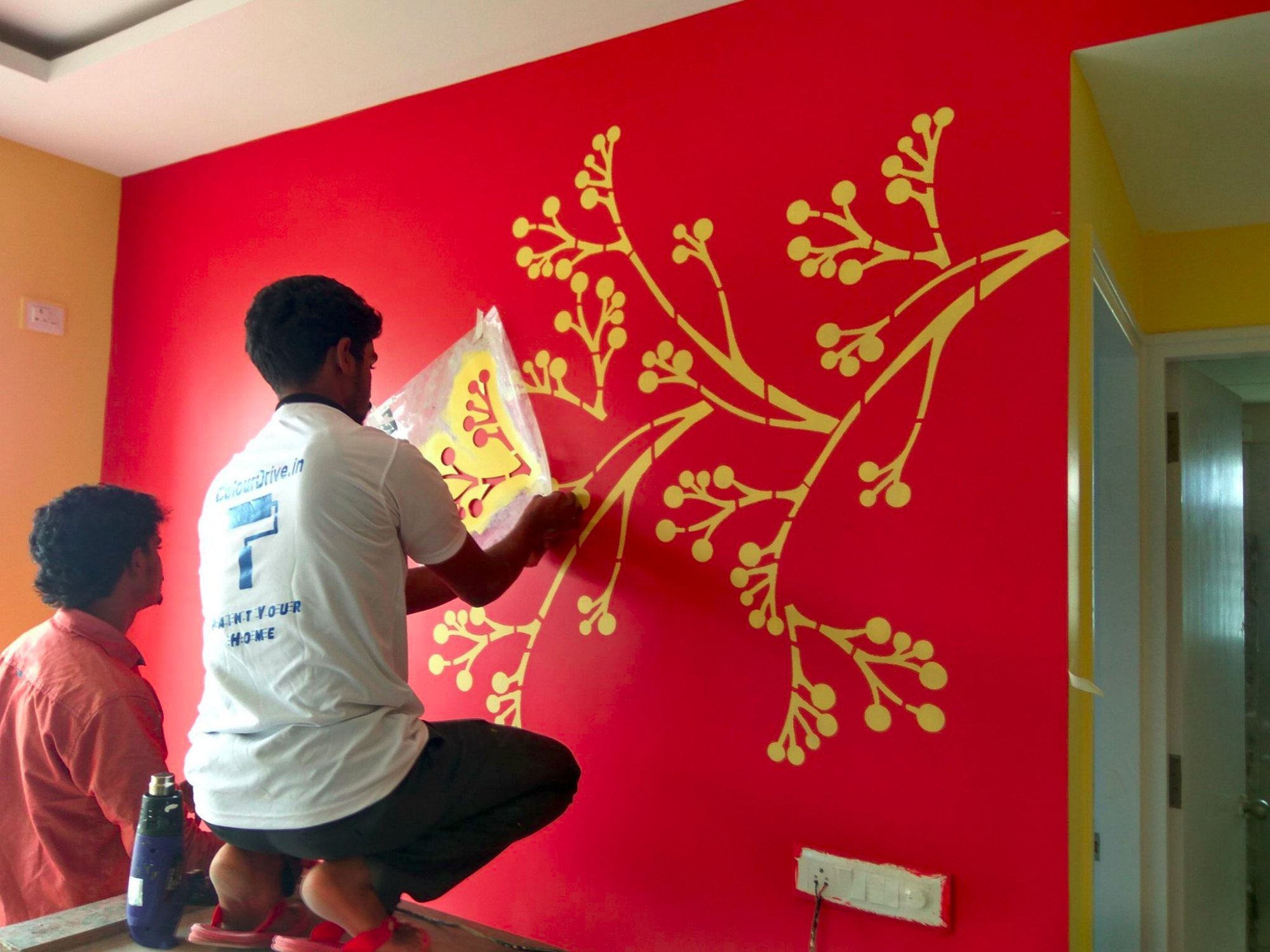Color Consultation in Lakewood: Expert Advice for Perfectly Coordinated Interiors
Color Consultation in Lakewood: Expert Advice for Perfectly Coordinated Interiors
Blog Article
Enhance Your Interior Decoration With Comprehensive Color Assessment
The assimilation of shade assessment into interior decoration presents a distinct possibility to improve and elevate the aesthetic and emotional vibration of a room. By engaging with an experienced shade consultant, you can navigate the complexities of color choice, making certain that your selections not only complement architectural features however additionally reverberate with individual style and psychological impact. This tactical partnership can substantially affect the total ambience of your setting, cultivating a feeling of consistency and objective. Recognizing the subtleties of this process is necessary-- what crucial elements should be thought about to accomplish ideal results?
Benefits of Shade Examination

Furthermore, shade appointment aids in optimizing all-natural light and optimizing spatial understanding. Lighter colors can make an area show up even more expansive, while darker shades create an intimate setting. Cleveland Metro Painting Specialists. This calculated application of shade can dramatically affect the overall ambiance of any interior area
Furthermore, expert specialists have a thorough understanding of existing fads and classic standards, ensuring that the picked shades will certainly continue to be enticing with time. This insight can conserve clients from expensive redesigns in the future. Shade examination equips clients by providing them with a clear vision and direction, cultivating confidence in their layout options and inevitably leading to an extra successful and satisfying indoor style outcome.
Understanding Shade Psychology
The importance of color psychology in interior decoration can not be overemphasized, as it explores the psychological and mental impacts that various colors can evoke in people. Colors can affect mood, behavior, and also productivity, making them an essential factor to consider in any layout project.
For circumstances, warm shades such as red, orange, and yellow are typically associated with power and warmth. They can stimulate sensations of excitement and convenience, making them suitable for social areas like living kitchens or spaces. Conversely, great colors like blue, eco-friendly, and purple often tend to evoke peace and tranquility, making them suitable for bedrooms or meditation locations.
Additionally, making use of neutral tones can develop a balanced atmosphere by permitting the bolder colors to stand apart without frustrating the detects. Comprehending these mental influences enables designers to produce rooms that not only look aesthetically pleasing however additionally advertise emotional wellness.
Integrating shade psychology right into interior design includes a thoughtful choice of tones customized to the intended function of each area, eventually boosting the total experience for its occupants. This awareness is important for accomplishing a unified and useful indoor setting.
The Shade Wheel Explained
Understanding the relationships between shades is vital for efficient interior design, and the color wheel acts as an important tool in this process. The color wheel, developed by Isaac Newton in the 17th century, illustrates the spectrum of shades prepared in a round layout. It consists of primaries-- red, blue, and yellow-- that can not be produced by mixing other colors. Second shades, created by integrating main colors, include green, orange, and purple. Tertiary shades arise from mixing a primary and a secondary shade, bring about colors such as turquoise and red-orange.
The shade wheel assists designers realize the connections between shades, including corresponding, comparable, and triadic schemes. Corresponding shades, positioned contrary each other on the wheel, develop lively contrasts that can energize a room. Comparable shades, located next to each other, offer a unified and cohesive appearance. Triadic plans make use of three evenly spaced shades, offering equilibrium and visual rate of interest.
Making use of the color wheel in interior decoration not only boosts aesthetic charm yet also stimulates specific emotions and ambiences, making it an essential referral for color assessment. Recognizing these relationships eventually equips designers to create areas that are both aesthetically exciting and functional.
Choosing the Right Scheme
Frequently, choosing the ideal scheme is a decisive element in accomplishing an effective interior decoration project. A well-chosen shade plan can link a space, enhance its features, and evoke preferred emotions. To start, think about the objective of the area. Various rooms offer varied functions and require palettes that reflect Color Consultation in Lakewood their intended use; as an example, peaceful colors such as soft blues or eco-friendlies work well in bedrooms, promoting relaxation.
Next, take into consideration the all-natural light readily available. Light can substantially change exactly how colors appear, so it is crucial to analyze the area at different times of the day. Additionally, consider existing building aspects and furnishings. An unified combination ought to complement these attributes, producing a cohesive appearance throughout the area.
When picking colors, make use of the 60-30-10 policy, which suggests that 60% of the area should be a leading color, 30% a second color, and 10% an accent shade. This ratio guarantees equilibrium and aesthetic rate of interest (Cleveland Metro Painting Specialists). Ultimately, example colors on the wall surfaces before devoting, as this allows you to see just how the shades connect with one another and the total atmosphere they develop in your interior style project.
Collaborating With a Shade Specialist

When collaborating with a color specialist, the process normally starts with a first appointment. Throughout this conference, you'll review your vision, choices, and the existing aspects in your area. The specialist will evaluate your needs and may recommend specific shade schemes that straighten with your objectives.
After establishing a visit our website direction, the consultant will give examples and aesthetic aids to help you envision the recommended shade plans. This step is essential, as colors can show up in different ways under differing lighting conditions.
In addition, a shade specialist can guide you in picking corresponding furnishings, artwork, and devices to balance with your chosen scheme. By teaming up carefully, you can achieve a polished aesthetic that elevates your insides and creates a welcoming environment. Ultimately, the knowledge of a color specialist can dramatically improve the total effect of your style task.
Final Thought
In recap, extensive shade assessment acts as an important device for boosting interior decoration. By leveraging expert expertise of shade psychology and spatial dynamics, a tailored color palette can be created to stimulate particular emotions and develop a harmonious setting. This calculated method not only cultivates a cohesive design narrative but also mitigates the threat of pricey redesigns. Eventually, involving with a shade expert guarantees an educated and cosmetically pleasing result, raising the general experience of the space.
By engaging with an experienced color expert, you can navigate the complexities of color choice, guaranteeing that your options not only complement building functions but additionally resonate with personal style and psychological effect. It makes up key colors-- red, blue, and yellow-- that can not be created by mixing various other colors.The shade wheel aids developers realize the relationships between colors, including corresponding, analogous, and triadic plans.When picking colors, utilize the 60-30-10 guideline, which suggests that 60% of the room must be a dominant shade, 30% an additional color, and 10% an accent shade. By leveraging professional knowledge of shade psychology and spatial characteristics, a tailored color palette can be developed to stimulate details emotions and create an unified setting.
Report this page